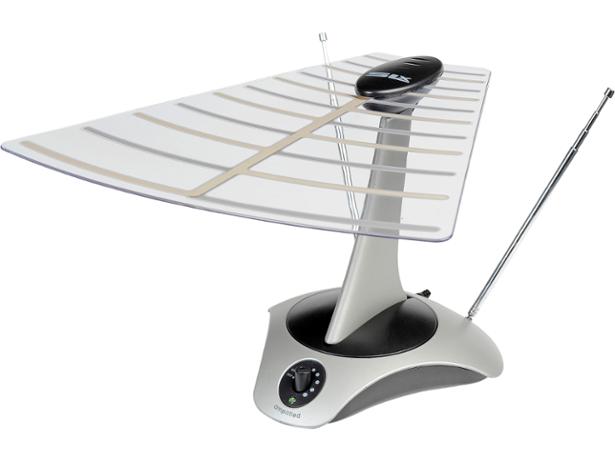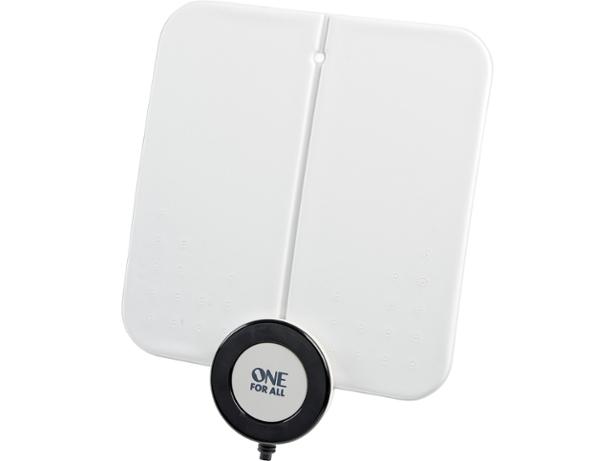How we test indoor aerials

We put every indoor TV aerial through a mixture of technical lab tests and real world assessments in actual homes. This enables us to give you expert and exhaustive verdicts you can trust.
Our unique testing can point you towards the Best Buy indoor aerials, and the ones that just aren't up to the job and even make your picture worse in some cases.
Read on to find out:
- What makes a Which? Best Buy indoor TV aerial
- How indoor TV aerials are tested in the lab
- How we check whether they work in real homes
- Should I buy it?
Find the best indoor TV aerial for you with our extensive indoor aerial reviews.
What makes a Best Buy indoor TV aerial?
You can't beat a good rooftop aerial for getting the best TV reception, but sometimes it's not an option. You may live in a block of flats, or already be using your roof aerial for another television.
In this case, a Best Buy indoor TV aerial can help you get a great TV picture, but bear in mind that where you live, the size of surrounding buildings and the position of the aerial all play their part.
We test indoor aerials in the lab and in real homes in both strong and weak signal areas. We also test that an aerial is easy to set-up and use, that the cable is a decent length and that any built-in amplifier actually improves the performance of the aerial (we find that some don't).
We also ensure that reception is good across all TV channels, meaning you should get all your favourite ones to watch. Best Buy indoor aerials excel across all these areas, and more.
Technical lab testing
We carry out a series of technical measurements in a radio-frequency (RF) anechoic test chamber. Using specialist equipment, we measure the bandwidth and response over the UHF TV band (channel 21 to channel 62). This helps us detect:
- How sensitive the aerials are for picking up even weak signals
- How well the aerial can cover all the frequencies required for digital TV
- For models with an amplifier, we check if it helps or disrupts the picture
If the indoor TV aerial has a 4G filter designed to block interference from mobile signals, we also check its effectiveness. Interference is possible because 4G and 5G services are delivered using airwaves close to the frequencies now used for Freeview.
We find that 4G and 5G filters in some indoor TV aerials can activate too early and actually cause disruption in the picture. This will particularly affect people living in the few areas that use higher frequencies, notably channels 59 or 60, to receive TV.
If you want to check whether that could be you, Digital UK has a postcode coverage checker. Just select 'detailed view' to get more information.
Testing in real homes

Alongside the technical tests, we take indoor aerials into homes to see how they can handle real-world conditions. We use houses in two locations served by different types and strengths of TV transmitters.
Working in different rooms and on different floors, we find the optimal position and angle for each aerial, and note how important this positioning is for a good picture. Best Buy aerials can get a good picture easily and so positioning is less critical than poorer models.
Digital TV channels are grouped into bundles, called multiplexes, which are transmitted at different frequencies across the TV band. Poor reception in one part of the TV band could mean you miss out on some channels. So, we tune into six TV channels (one from each multiplex) plus two radio stations to see if the aerial can get full reception.
Should I buy it?
All data gathered on each indoor TV aerial during testing is carefully analysed by our experts, so that the highs and lows of every product are revealed.
If anything doesn't add up with an indoor aerial we will investigate further. If there's a clear fault, we will buy a replacement to see whether it's a one-off issue, or symptomatic of a larger problem.
Once we're happy with the data, we then calculate the overall test score using the below evaluation breakdown:
- Performance: 70%
- Set up and ease of use: 20%
- Build quality: 10%
All indoor TV aerials must score 76% or higher to qualify as a Best Buy. By choosing a Which? Best Buy indoor TV aerial, you'll be maximising your chances of getting good quality picture and sound, regardless of whether the signal is strong, medium or low.
Most aerials can handle strong signal areas, but poorer models struggle when the signal is medium or low. Some can't even get a picture at all unless the signal is really powerful - and that's not the case for most areas in the UK. Those that score less than 45% are considered a Don't Buy.
End the frustration and ensure a strong signal by checking out our round-up of the best indoor aerials.



